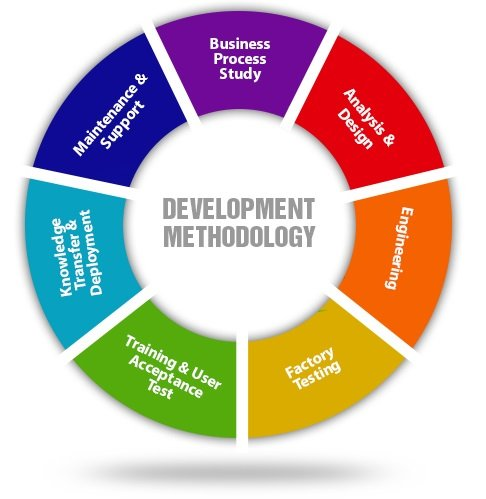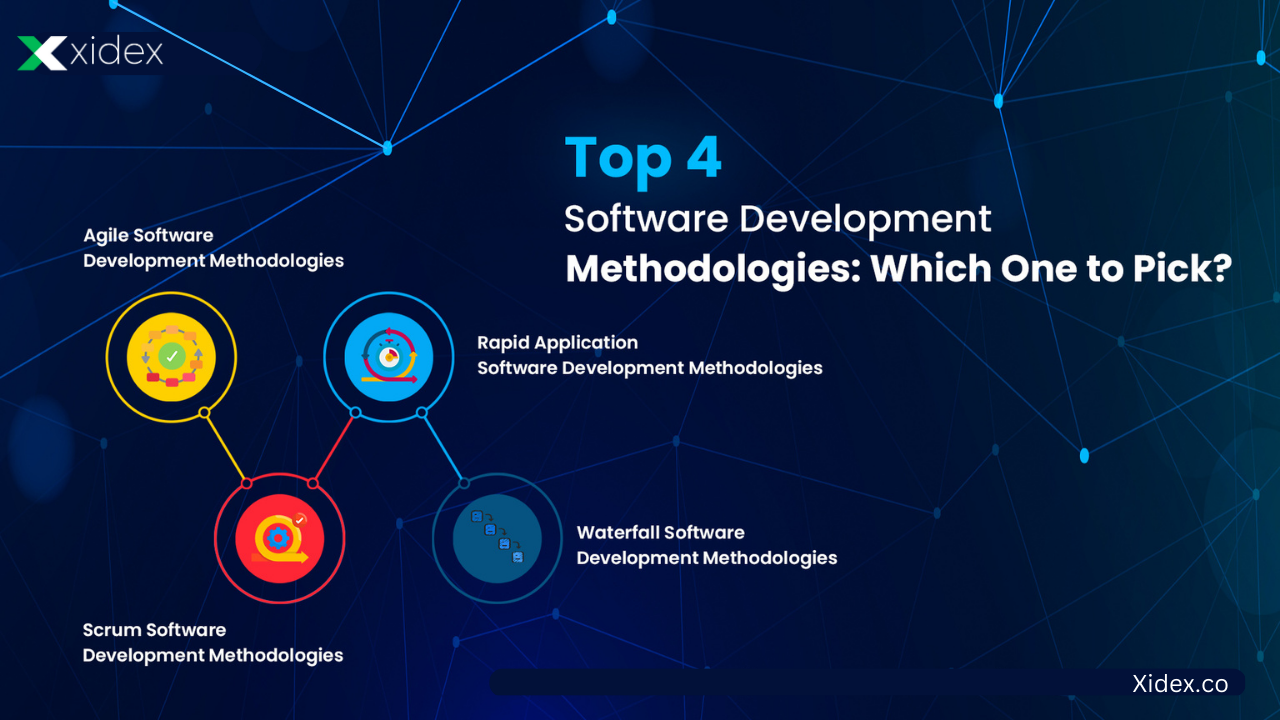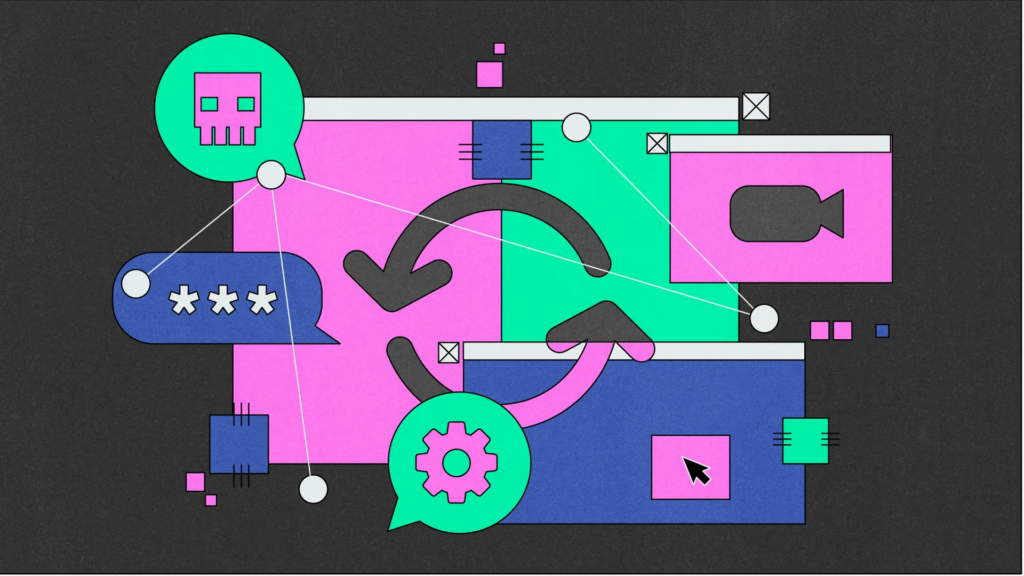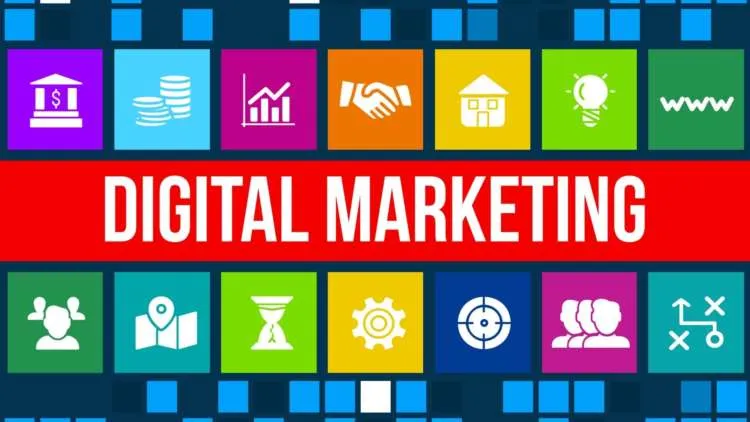There are top 8 methodologies of software development, each with its own approach to the development process. Some of the most commonly used methodologies are:
Waterfall
The waterfall methodology is one of the top most out of 8 methodologies of software development and linear sequential approach to software development. In this method, each phase of the development process is completed before moving on to the next phase. The waterfall methodology is a linear sequential approach to software development. It consists of a series of phases that must be completed before the next phase can begin. The phases include:
- Requirements gathering and analysis: In this phase, the requirements for the software product are gathered and analyzed to ensure that they are complete, accurate, and unambiguous.
- Design: Once the requirements are finalized, the design phase begins. The design team creates a detailed design of the software product, including the architecture, interfaces, and data structures.
- Implementation: In this phase, the software product is developed based on the design specifications. This phase involves coding, debugging, and testing.
- Testing: Once the software product is implemented, it is tested to ensure that it meets the requirements and functions as expected. This phase includes unit testing, integration testing, and system testing.
- Deployment: Once the software product passes the testing phase, it is deployed to the production environment.
- Maintenance: After deployment, the software product may require maintenance to fix bugs, add new features, or make improvements.
The waterfall methodology provides a structured approach to software development and ensures that each phase is completed before moving on to the next. It is suitable for projects where the requirements are well-defined and the development team has a clear understanding of what needs to be developed. However, it can be inflexible when changes need to be made, and the lack of collaboration between the different phases of the development process can lead to delays and increased costs.

Agile
The Agile methodology is an iterative and incremental approach to software development. It emphasizes collaboration, flexibility, and rapid delivery of working software.
Agile is an iterative and incremental approach to software development that emphasizes collaboration, flexibility, and rapid delivery of working software. Unlike the waterfall methodology, which is a linear sequential approach, Agile methodologies focus on delivering software in small increments, with each increment adding new functionality to the product.
The Agile methodology emphasizes the following principles:
- Individuals and interactions over processes and tools: Agile methodologies prioritize people and communication over rigid processes and tools. This means that the development team and stakeholders collaborate closely throughout the development process to ensure that the software product meets the requirements and functions as expected.
- Working software over comprehensive documentation: Agile methodologies prioritize delivering working software over creating comprehensive documentation. While documentation is important, Agile methodologies prioritize delivering software that meets the requirements and functions as expected.
- Customer collaboration over contract negotiation: Agile methodologies prioritize collaboration with customers to understand their needs and requirements, rather than relying on a fixed contract that may not reflect the customer’s changing needs.
- Responding to change over following a plan: Agile methodologies prioritize flexibility and adaptability, recognizing that requirements may change as the development process progresses. The development team responds to changes in requirements and adjusts the development plan accordingly.
Agile methodologies is considered to be very important in top 8 methodologies of software development, include several frameworks, such as Scrum, Kanban, and Extreme Programming (XP). These frameworks provide a set of roles, ceremonies, and artifacts to help the development team work together effectively and deliver software products that meet the requirements and expectations of stakeholders.

Scrum
Scrum is an Agile methodology that emphasizes teamwork, collaboration, and frequent delivery of working software. It involves a set of roles, ceremonies, and artifacts that help the team work together effectively.
Scrum is an Agile methodology that provides a framework for software development. It is a lightweight, iterative approach to software development that emphasizes collaboration, flexibility, and rapid delivery of working software.
The Scrum framework includes the following roles, ceremonies, and artifacts:
- Roles:
- Product Owner: Represents the stakeholders and is responsible for defining and prioritizing the product backlog.
- Scrum Master: Facilitates the Scrum ceremonies and ensures that the Scrum framework is followed.
- Development Team: The group of developers who are responsible for developing the software product.
- Ceremonies:
- Sprint Planning: At the beginning of each sprint, the team meets to plan the work for the upcoming sprint.
- Daily Scrum: A brief daily meeting where the team discusses their progress and plans for the day.
- Sprint Review: At the end of each sprint, the team demonstrates the working software to stakeholders and receives feedback.
- Sprint Retrospective: After the Sprint Review, the team reflects on their performance and identifies areas for improvement.
- Artifacts:
- Product Backlog: A list of all the requirements for the software product, prioritized by the Product Owner.
- Sprint Backlog: A list of the requirements that the team has committed to completing during the current sprint.
- Increment: The working software that is delivered at the end of each sprint.
Scrum provides a flexible and adaptable approach to software development that allows the team to respond quickly to changes in requirements and deliver software products that meet the expectations of stakeholders. It is well-suited for projects where the requirements are not well-defined or may change frequently.
Kanban
Kanban is another Agile methodology that focuses on visualizing the workflow and limiting work in progress. It emphasizes continuous delivery and improvement.
Kanban is an Agile methodology that provides a visual approach to software development. It emphasizes continuous delivery of small increments of work and limits work in progress to prevent overloading the development team.
The Kanban framework includes the following elements:
- Visual Board: A visual representation of the workflow that displays each task as a card moving from left to right across the board as it progresses through the development process.
- Work in Progress (WIP) Limits: A limit on the number of tasks that can be in progress at any given time to prevent overloading the development team and improve focus.
- Pull System: Developers pull work from the backlog as they are ready to work on it, rather than having work assigned to them.
- Continuous Improvement: The team continuously reviews and improves their processes to increase efficiency and quality.
The Kanban methodology provides a flexible approach to software development that allows the team to respond quickly to changes in requirements and deliver software products that meet the expectations of stakeholders. It is well-suited for projects where the requirements are not well-defined or may change frequently, and the development team needs to manage a large number of tasks simultaneously.
Lean
The Lean methodology is a customer-focused approach to software development. It aims to eliminate waste, increase efficiency, and improve the overall quality of the software.
Lean is a software development methodology that focuses on delivering value to the customer while minimizing waste. It is inspired by the principles of lean manufacturing and emphasizes continuous improvement and customer focus.
The Lean methodology includes the following principles:
- Value: The methodology emphasizes identifying and delivering value to the customer. The development team should focus on delivering the features that are most important to the customer and eliminate any features or processes that do not add value.
- Value Stream Mapping: The methodology uses value stream mapping to identify the steps in the software development process and eliminate any non-value-adding steps.
- Flow: The methodology emphasizes creating a smooth and continuous flow of work through the development process. The development team should eliminate bottlenecks and delays in the process and ensure that work is continuously moving through the process.
- Pull: The methodology emphasizes a pull system where work is pulled through the development process as needed, rather than pushed through the process based on a fixed schedule.
- Perfection: The methodology emphasizes continuous improvement and striving for perfection. The development team should constantly look for ways to improve the process and eliminate waste.
The Lean methodology provides a customer-focused approach to software development that emphasizes delivering value while minimizing waste. It is well-suited for projects where the customer’s needs are well-defined, and the development team needs to minimize waste and continuously improve their processes.
DevOps
DevOps is a methodology that combines software development and IT operations. It emphasizes collaboration between developers and operations teams, continuous delivery, and automation.
DevOps is a software development methodology that emphasizes collaboration and communication between development and operations teams to improve the speed and quality of software delivery. It combines development (Dev) and operations (Ops) into a single continuous process.
The DevOps methodology includes the following elements:
- Continuous Integration (CI): The process of regularly integrating code changes into a shared repository to ensure that the code is always working and compatible with other code changes.
- Continuous Delivery (CD): The process of automatically deploying changes to a staging or production environment after they have passed testing.
- Infrastructure as Code (IaC): The process of managing infrastructure using code, allowing for automated provisioning and deployment of infrastructure resources.
- Monitoring and Logging: The process of monitoring the software and infrastructure to detect and respond to issues quickly.
- Collaboration and Communication: The methodology emphasizes collaboration and communication between development and operations teams to improve the speed and quality of software delivery.
DevOps provides a streamlined approach to software development that emphasizes collaboration and communication between teams. It is well-suited for projects that require rapid and frequent software releases, as well as for organizations that need to manage complex infrastructure environments. By automating many of the processes involved in software development and deployment, DevOps enables teams to deliver high-quality software products more quickly and efficiently.
Rapid Application Development (RAD)
RAD is a methodology that emphasizes prototyping, iterative development, and quick delivery of working software. It is particularly useful for projects that require a fast turnaround time.
Rapid Application Development (RAD) is a software development methodology that focuses on rapid prototyping and iterative development. It is designed to accelerate the development process and produce high-quality software products quickly.
The RAD methodology includes the following phases:
- Requirements Planning: The development team works with stakeholders to identify requirements for the software product.
- User Design: The team creates a prototype of the software product and presents it to users for feedback.
- Construction: The team develops the software product iteratively, with each iteration building on the feedback from the previous iteration.
- Testing: The team tests the software product to ensure that it meets the requirements and is of high quality.
- Deployment: The team deploys the software product to the production environment.
RAD emphasizes close collaboration between the development team and stakeholders, as well as a focus on prototyping and rapid iteration. It is well-suited for projects where requirements are subject to change, and stakeholders need to see tangible progress quickly. By emphasizing rapid prototyping and iteration, RAD enables teams to develop high-quality software products quickly, while also ensuring that the software meets the needs of stakeholders
Spiral
The Spiral methodology is an iterative approach to software development. It involves several cycles of planning, designing, developing, and testing, with each cycle building on the previous one.
The Spiral model is a software development methodology that emphasizes risk management and iterative development. It combines elements of both the Waterfall and iterative models and is often used for large and complex software development projects.
The Spiral methodology includes the following phases:
- Planning: The development team works with stakeholders to identify requirements, risks, and objectives for the software product.
- Risk Analysis: The team analyzes the risks associated with the software product and develops strategies to mitigate them.
- Engineering: The team develops a prototype of the software product based on the requirements and objectives identified in the planning phase.
- Evaluation: The team evaluates the prototype to identify any issues and gathers feedback from stakeholders.
- Planning the Next Iteration: Based on the feedback and evaluation, the team plans the next iteration of development, which may involve revising the requirements or objectives.
The Spiral methodology emphasizes continuous risk management and iterative development, with each iteration building on the previous one. It is well-suited for projects where the requirements are not well-defined, and the development team needs to adapt to changing requirements and risks. The Spiral methodology enables teams to manage risks effectively and deliver high-quality software products that meet the needs of stakeholders.
These methodologies can be used individually or in combination, depending on the needs of the project and the team.





